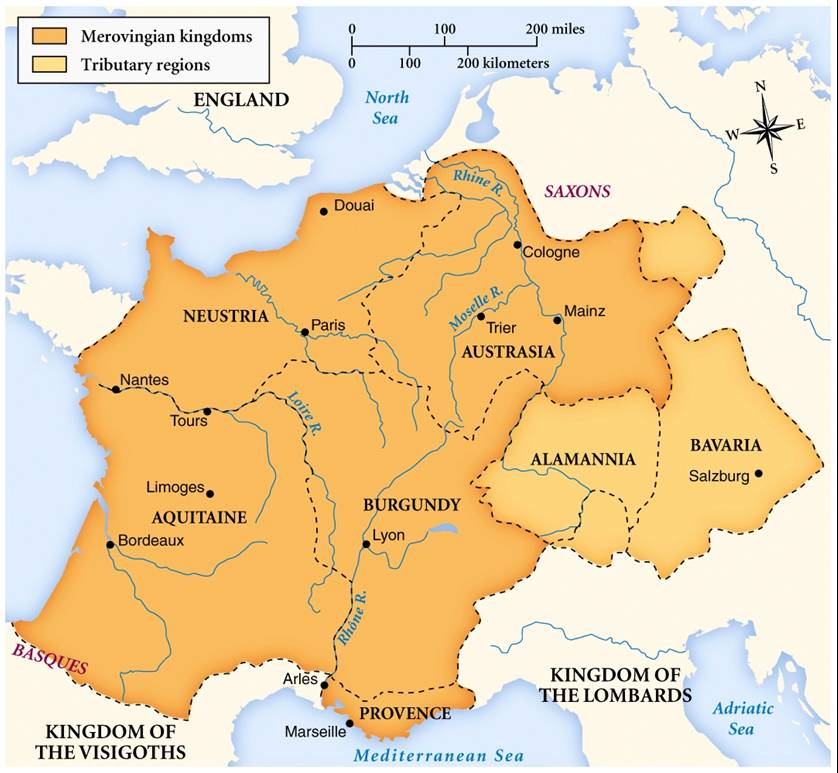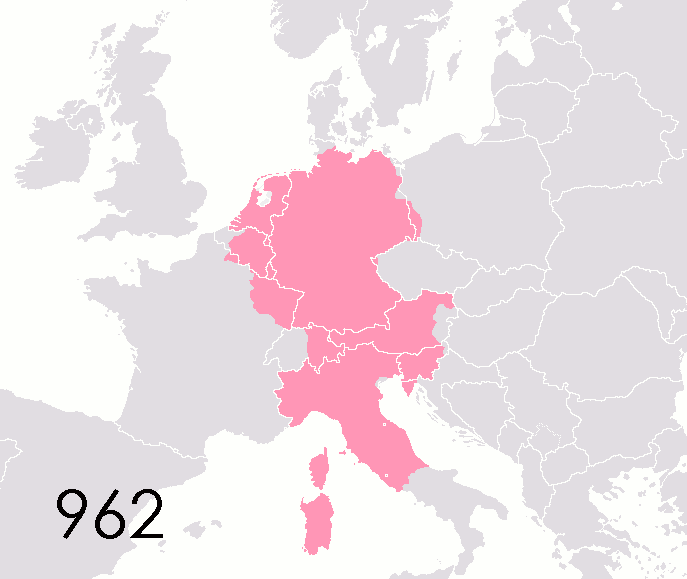Medieval Germany came into being when numerous Germanic tribes came to settle in portions of the Roman Empire. These tribes were brought into unity under the Frankish Empire in the 5th and 6th centuries.
Eventually a German region became prominent under the Duke of Saxony in the 10th century. Most Germanic tribes became a part of the Christian world and the Holy Roman Empire was established under Otto the Great.
Read more about the “Lost in Time? Debunking the Myth of Medieval Germany” >>
Read more about the 10 Enchanting Medieval Experiences at Nuremberg’s Christmas Market >>
German Castles - Discover 8 Stunning Castles in Germany - Castles of German - Medieval Lists!
Read more about the 8 German Castles List >>Read more about the A Timeline of Ruling Dynasties of Germany during the Medieval Period >>
Read more about the Aachen in the Middle Ages: A Hub of Politics, Religion, and Culture >>
Read more about the Amazing Medieval Cities in Germany You Should Visit >>
Read more about the Discover the Masterpieces of Gothic Armour Made by Southern German Armourers >>
Read more about the Exploring Heidelberg’s Medieval Charms: A Top 10 Guide >>
Discover Famous German Knights, Tannhauser, Heinrich Von Bulow and Franz Von Sickingen Read more about the Famous German Knights >>
Reichsburg and Wartburg Castle are two of our favourites Castles in Germany Read more about the German Medieval Castles >>
Read more about the Journey Through Time: Discovering the Top 10 Medieval Castles in Germany >>
Read more about the Masters of Steel: Unveiling the Famous Medieval Armourers of Germany >>
German Kings did not usually inherit their kingdom as was the case in the rest of Europe Read more about the Medieval German Kings >>
Germany has many stunning Medieval Towns such as Regensburg, Tubingen and Lauffen Read more about the Medieval German Towns >>
Read more about the Top 10 Beautiful Medieval German Towns >>
Read more about the Top 10 Historically Most Important Medieval Towns in Germany >>
Read more about the Top 10 Medieval Architectural Gems in Germany You Should Visit >>
Mainland Europe in medieval times was a mix of different kingdoms and empires and the area known as Germany was a very large empire that was controlled by different groups during the medieval period.

Holy Roman Empire c. 962 – 1806


It emanated from an aristocratic hierarchy in which the King or the Duke stood at the top of the order, followed by the Princes who in turn granted portions of their lands to faithful nobles.
Serfs were required to offer up a portion of their labor to the landowning aristocracy whereas peasants, in contrast, handed over a portion of their annual harvest to their local noble.
Medieval German people were a diverse mixture of Germanic tribes as well as Goths and Vandals.
During the Middle Ages, people with Germanic origins expanded all over Europe, mixing with the Anglo-Saxons in Britain and otherwise becoming a part of the Holy Roman Empire.
The Viking Norsemen, specifically, went on to settle in remoter regions of the continent such as Sweden, Norway, and Iceland.
In the Kingdom of Germany, castles were built by the lords and princes for various reasons.
They served as fortifications to withstand the enemy, as a symbol of control within a specific area as well as a center from which the lord or the prince could rule his respective area.
The significance of the castle became more pronounced because of the internecine wars between lords and princes for the appropriation of each other’s lands.
Castles also served as a social statement to declare the overlooking lord or prince’s obvious alleviation above the rest of the society.
Castles built by Germanic lords and princes set in motion the trend of castle-building all over Europe.
Medieval German knights are traced back to the days of Charlemagne in the 8th century when he summoned mounted warriors to fight for him in various battles.
These warriors hailed from the wealthy nobility, closely associated with, and faithful to, the king. These warriors came to be known as knights.
Over time, being a German knight became synonymous with being a warrior and a knight was automatically considered a part of the aristocracy in medieval German society.
However, early medieval knights could only hail from aristocratic families. From the 13th century onwards, the Order of the Teutonic Knights, a German military formation, was very significant in expanding the reach of Christianity to parts of Europe still not Christian such as Lithuania and Poland.
As early as the 10th century, small towns and cities started to come into being all over German lands.
These towns and cities were initially situated around the castles and palaces of the nobility, the high-level religious leadership, or places with imperial fortifications.
However, they were bestowed with certain independence and liberties, categorized under municipal rights and town privileges. These rights and privileges allowed towns to maintain economic freedom and implement their own legal and judicial system.
Some of the cities were directly subject to the Emperor himself, giving them greater autonomy and making them more conducive to economic activity.
Among major medieval German Kings was Charlemagne who was a Frankish king but effectively ruled over all of the West Germanic peoples.
The next major ruling figure in medieval Germany was Otto I who was a German himself and was able to unite all Germanic tribes into a single kingdom, effectively laying the foundations for the Holy Roman Empire.
Among the well-known and recorded forms of early German medieval music is Minnesang. Minnesang was a lyrical song that was performed by individuals known as Minnesingers, focusing on the subject of love.
Minnesangs were typically performed in the courts of nobility and often the performers also belonged to the aristocratic class.
Another notable form of medieval German music that has been historically recorded is Geisslerlieder. These were penitential songs sung by wandering groups who flagged themselves as penitence.
These flagellants spread over the Germanic lands first in the 13th century as a result of unending warfare, and then in the 14th century in the wake of the Black Death.
Early medieval German food was divided into two broad categories: food consumed by the nobility and the foods consumed by the peasants. Nobility ate game, the meat of domesticated animals, fish, dried fruits, fresh fruits, and vegetables.
A wide range of herbs was used in foods, although in spices pepper and ginger were more frequently used. Meats were often turned into pies and sausages.
The nobility drank wine. Different kinds of grains were frequently consumed in a regular diet. Peasants, in contrast, fed on cheaper portions of the meat and mostly on vegetables and porridge.
Lentils, beans, and bread were often the inexpensive foods preferred by the poor.
The dress for the male in medieval Germany was usually comprised of a wide tunic that varied in length. It comprised of sleeves that went all the way down to the wrists.
Beneath the tunic, it became common from the 11th century onwards to wear linen. A cloak was often worn above the tunic. Leg-garment of various lengths were worn.
Women usually wore long chemises with a tunic or a coat on top of it. Both of these were of a full length, from neck to feet. A cloak was also usually worn above the tunic.
Peasants in medieval Germany were free and could own land, although they had no means to employ labor and so had to work on their own to cultivate the lands.
Often the land was granted by Church or a local noble on a nominal rent to the peasant. Slaves were often owned by the nobility and major landowners.
They were used for personal service as well as labor for the land. Sometimes, slaves were granted the land they worked on.
Medieval Germany emerged from a coalition of Germanic tribes which were eventually brought together under different kings and dynasties.
Over time, Church came to play a very significant role and became one of the key power-brokers, others being the princes of various Germanic states.
Medieval Germany played an important role in contributing to the traditions of Europe, particularly the tradition of building castles.